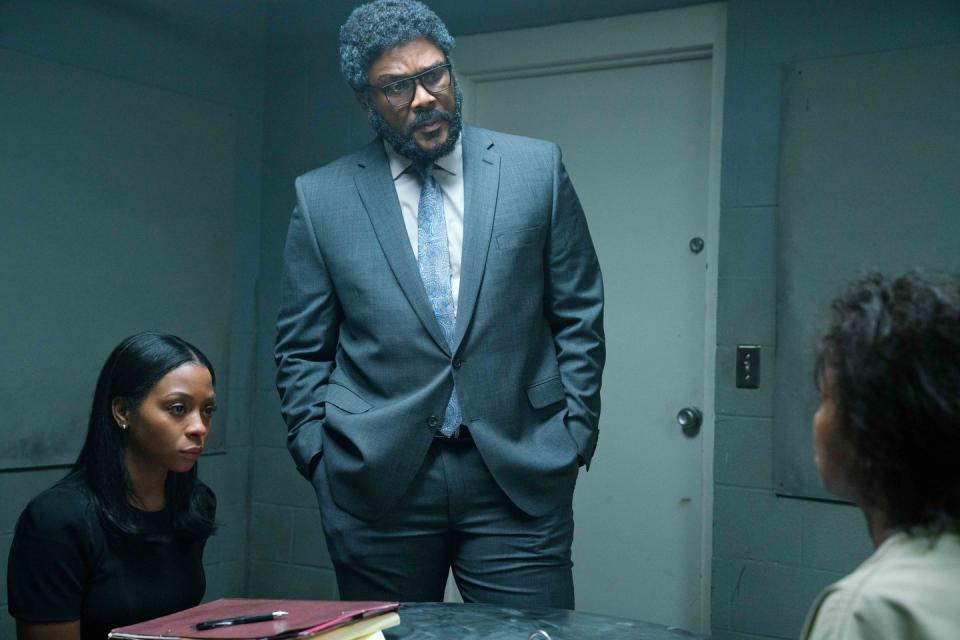You now only have to watch 2 minutes to count as a 'watch' on Netflix
Over the past year or so, Netflix has been opening up more about just how many people watch their original content.
While we don't get ratings figures for every piece of content, Netflix does now show which movies and TV shows are the most popular, mainly through top 10 rankings on the service when you go to watch something.
For instance, at the time of writing, You is number four most-watched in the UK, Sex Education is number one (obviously), The Prodigy is number four in movies and A Fall from Grace is number three in movies.

These only show how popular something is on that particular day, but Netflix has been releasing overall top tens as well, like the most-watched movies and TV shows of 2019.
Every now and then, the streaming giant will release specific viewing figures, although these are often met with cynicism as they've been so guarded in the past about what's done well on Netflix.
Related: What Netflix's ratings really mean for your favourite shows
Most notably, this happened with Murder Mystery last year which recorded the biggest opening weekend for a Netflix movie ever.

The way that Netflix originally measured these was that each account had to have watched at least 70% of the content, be it a movie or a single episode of a TV show, and only one viewing per account counted.
However, the company has now made a big change to that metric – and it's not going to do anything to lessen the cynicism over the ratings.
In a Netflix letter to shareholders, it's explained that the streaming giant has been working on the best way to "share content highlights that demonstrate popularity".
"Given that we now have titles with widely varying lengths – from short episodes (eg Special at around 15 minutes) to long films (eg The Highwaymen at 132 minutes), we believe that reporting households viewing a title based on 70% of a single episode of a series or of an entire film, which we have been doing, makes less sense," the letter reads.

So now the viewing figures are based on "households (accounts)" that chose to watch a given title", and the measure for that is that they "chose to watch and did watch for at least two minutes".
Netflix argues that this indicates the "choice was intentional" and state that it's similar to BBC iPlayer rankings on 'requests' for a specific title, 'most popular' articles on the New York Times and YouTube view counts.
"This way, short and long titles are treated equally, leveling the playing field for all types of our content including interactive content, which has no fixed length," it states.
In a way, we get the approach that if you've watched two minutes of something, it (probably) isn't just Netflix autoplaying something and that you've intentionally decided to watch it. Or that you butt-dialled it, so to speak, by sitting on the remote.
But unlike the 70% rule, it doesn't discount people who switched off after 20 minutes. or 10 minutes. Or 2 minutes and one second.

Under the new metric, 6 Underground was watched by 83 million accounts in its first four week. It's not a surprise that many chose to watch a new Michael Bay movie with Ryan Reynolds, but there's an equal chance that many of them switched off after the bombastic opening 20 minutes.
At least making 70% of any given content having been watched as the criterion is a strong indicator that people would watch something through the end. After all, would you really switch off a two-hour movie if you've already sat through 84 minutes of it?
It's also unclear how watching two minutes of one 15-minute episode of Special is any way more representative than watching 10 and a half minutes of one episode.

The change certainly won't help Netflix in terms of people's cynicism towards ratings, especially as a case study they used show how dramatically the new metric changes the viewing figures.
Under the old system, 33 million households watched Our Planet, but now under the new metric, 45 million households watched it. On average, it boosts the ratings for Netflix titles by 35%.
That won't do anything to change the belief that Netflix only promotes things that do well – because they appear to have changed the system to be more positive towards their ratings.
It's absolutely Netflix's prerogative to chose what ratings they reveal as we imagine most studios, especially when it comes to movies, would rather that the box office didn't reveal which of their movies flopped.
But if Netflix wants its ratings to be taken seriously by even the most cynical of viewers, then it might have to start revealing all of them, and not just the successful ones.
Digital Spy now has a newsletter – sign up to get it sent straight to your inbox.
Want up-to-the-minute entertainment news and features? Just hit 'Like' on our Digital Spy Facebook page and 'Follow' on our @digitalspy Instagram and Twitter accounts.
You Might Also Like

